If the idea of a cheap airplane sounds too good to be true, we’d agree—it is. At least in most cases. If you want to fly in the flight levels at 180 knots, the term “cheap” isn’t very useful.
But if you have more modest aims for your flying fun, then there are truly some cheap options available, as you’ll see.
As Bob Dylan said about used planes way back when, “!the times they are a’ changin’.” And maybe he wasn’t singing specifically about planes, but the point stands. For the past 40 years, there has been an abundance of used planes, overflow from a time when Wichita et al. were cranking out 10,000-plus planes a year. And since we now know that most planes last if not forever then for a long, long time— longer than a pilot’s flying career, in many instances—that great overabundance kept used prices down. It was win/win/win. You got a cheap, good-quality plane that wasn’t too expensive to keep in flying shape. The advantages of buying used greatly outweighed the negatives and were too great for most of us to pass up.
Two things have happened to change that sight picture. The first is that those older planes aren’t as numerous as they once were. While some are lost to accidents and natural disasters, a large number go away for lack of use. Others become obsolete, and yet others become orphans, with the type certificate owner no longer in business to supply replacement parts.
So with fewer planes on the supply side, higher prices were bound to come and they have. Many models, especially high-performance planes, have increased in value at a rate far exceeding that of inflation. In the past 10 years alone, typical asking prices for many GA singles with bigger engines and constant speed props have doubled in price. Many others are close to that. And with the used fleet shrinking with no end in sight, there’s no mechanism in place to reverse that trend.
Are you an aviation enthusiast or pilot? Sign up for our newsletter, full of tips, reviews and more!
The other thing that’s happening is that there are fewer secrets, fewer great planes that haven’t yet shown up on the radar of prospective buyers. Several of the planes in our lineup here fit that bill, planes that were unwanted or unloved for years but today are getting some attention. We might be partially to blame for spreading the news about these models, but the forces of the marketplace in the age of the internet are unstoppable. If there’s an underappreciated plane out there, the story is going to get out.
Another thing about our new lineup: some of these planes have long had a bad rap, often deservedly so. But as with the Piper Tomahawk, which suffered a spate of spin accidents early in its production life, the cause of the problem was in every case understood and fixed. Not buying a Tomahawk, or any plane, for that matter, because of a problem in its past makes no sense to us. Is it a perfect plane? Even if there were such a thing, the Tomahawk would not be it. But it’s a fun plane to fly, cheap to buy and cheap to own. We think a lot of pilots would be willing to overlook a few flaws for that deal.
So with this as a reminder and without further ado, our lineup of 10 (More) Cheapest Planes In The Sky.




